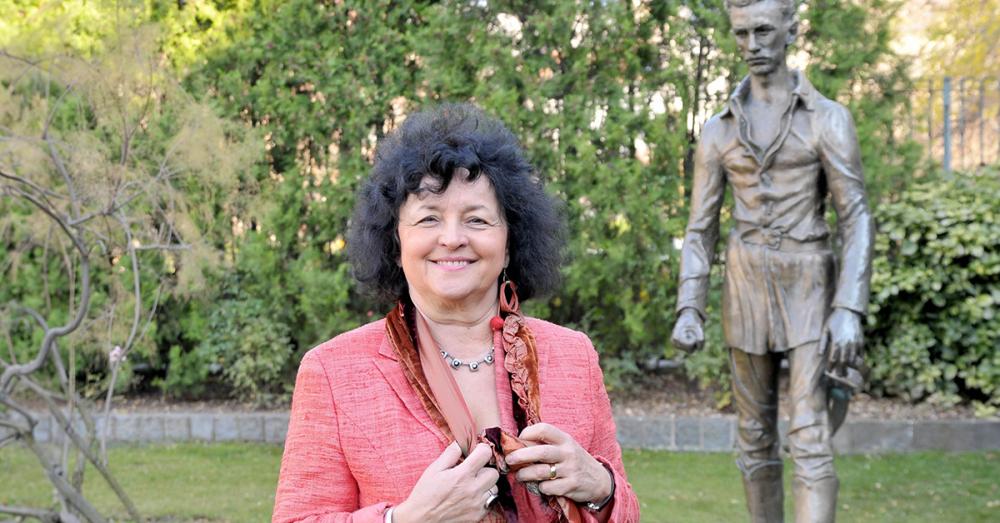
EMLÉKMŰVEKTŐL AZ EMLÉKMÚZEUMOKIG
A Petőfi-kultusz térfoglalása a 19. század közepétől a 20. századközepéig
Az 1848-49 évi forradalom és önvédelmi háború leverésének és az azt követő nemzeti traumának egyik kicsúcsosodását a költő, Petőfi Sándor eltűnése, halála jelentette. Az önkényuralom időszakában elevenen élő emlékezete látható „jel” után kiáltott, hamarosan kis formátumban fém- és porcelánszobor készült róla, majd az 1860-as évek elején majdnem illegálisan első mellszobrát is felállították szülővárosában. A kiegyezés tette lehetővé, hogy gyűjtés induljon a nemzet háláját bizonyító reprezentatív szoborra, amelyet majd 1882-ben avatnak fel a pesti Duna-parton. Ezt követően napjainkig a rendíthetetlen, a romantikusan mélázó, a szavaló, a harcos Petőfik népesítik be tereinket. A szoborállítás igényével párhuzamos a Petőfire vonatkozó mindennemű emlék megőrzésének vágya: kézirataitól a száradt virágcsokorig, leveleitől kardjáig, a pad, ahol ült, a fa, ami alatt írt, a ház, ami előtt elment. Az egyéni és közösségi emlékezet összekapcsolása vezetett a „múzeumot Petőfi Sándornak” mozgalomhoz, a táblaavatásokig, a kultusz intézményesüléséhez, a Petőfi Ház létrejöttéhez. A változó politikai környezetben a Petőfi-kultusz is alakváltozatokon ment át, s a muzealizálódás a magánterektől a közterekig, középületig vezetett.
FROM POETS’ MONUMENTS TO POETS’ HOUSES
Spatial claims of the Petőfi cult in the period from 1860 to 1960
The disappearance and death of the poet Sándor Petőfi was the climax of the aftermath of the 1848-49 Revolution and War of Independence. His memory, which remained alive during the period of tyranny, called for visible signals. Shortly after his death, metal and porcelain statuettes were made, then in the early 1860s the first bust was erected in his hometown, almost illegitimately. The compensation made it possible to initiate a collection of money for a representative monument to show the nation’s gratitude, which was placed on the banks of the Danube in Pest in 1882. Since then, the Hungarian squares have been characterised by the persistent, romantic, declaiming, bold, etc., poet. Petőfi has been colonised. Parallel to the process of creating a statue, there is a need to preserve all kinds of memorabilia, from manuscripts, dried bouquets, letters, swords, to the tree under which he wrote, the bench he sat on, the house where he walked. The linking of individual and collective memories led to movements such as the one with the slogan “A museum for Sándor Petőfi!”, to shield unveilings, and to the institutionalisation of the cult, ultimately to the creation of the Petőfi House. The changes in the political context also had a certain influence on the variants of the Petőfi cult, the process of museumisation led from private spaces to public places.